Tewkesbury Gloucestershire
Introduction
Loyn Blacker's maternal grandfather, John Wilkes was born in Tewkesbury, Gloucestershire, England in 1852. His mother Elizabeth Haines and his father William Wilkes had joined the Church of Jesus Christ of Latter-day Saints in 1848 in Tewkesbury.
This article shows two places in Tewkesbury, Workhouse Alley and Gravel Walk, where they lived before they emigrated to the United States.
Tewkesbury is famous for its alleys, walks and courts. Alleys and walks are the small passageways that go from one street to another. Courts are areas between the streets that have only one entry.
The markers on this map show some of the lanes, streets, roads, alleys and courts in Tewkesbury in the mid 1800s, when William Wilkes and Elizabeth Hunt were raising their family there.
Because of the Industrial Revolution, Tewkesbury became overcrowded especially in the alleys and courts. There was no running water until about 1870. Sanitation was extremely poor, with open trenches draining sewage into the rivers and streams. Many families would share one hand pump for water and each alley would have one shared non-flushable toilet.
Under these unsanitary conditions, diseases such as cholera and typhoid fever would flourish. In 1832 and 1849 serious epidemics of cholera took many lives in Tewkesbury.
Introduction
Loyn Blacker's maternal grandfather, John Wilkes was born in Tewkesbury, Gloucestershire, England in 1852. His mother Elizabeth Haines and his father William Wilkes had joined the Church of Jesus Christ of Latter-day Saints in 1848 in Tewkesbury.
This article shows two places in Tewkesbury, Workhouse Alley and Gravel Walk, where they lived before they emigrated to the United States.
Tewkesbury is famous for its alleys, walks and courts. Alleys and walks are the small passageways that go from one street to another. Courts are areas between the streets that have only one entry.
The markers on this map show some of the lanes, streets, roads, alleys and courts in Tewkesbury in the mid 1800s, when William Wilkes and Elizabeth Hunt were raising their family there.
Because of the Industrial Revolution, Tewkesbury became overcrowded especially in the alleys and courts. There was no running water until about 1870. Sanitation was extremely poor, with open trenches draining sewage into the rivers and streams. Many families would share one hand pump for water and each alley would have one shared non-flushable toilet.
Under these unsanitary conditions, diseases such as cholera and typhoid fever would flourish. In 1832 and 1849 serious epidemics of cholera took many lives in Tewkesbury.
The River Avon
The word Avon derives from an extint Celtic language and means "river". There are three different rivers called "Avon" in southwest England. The Avon that flows by Tewkesbury begins in Leicestershire and flows through five ancient counties.
It has a number locks and weirs on it. In Tewkesbury it was split into two streams to provide power to operate grain mills. One stream is called "Old Avon" and enters the Severn west of Tewkesbury. The other called "Mill Avon" enters the Severn south of Tewkesbury.
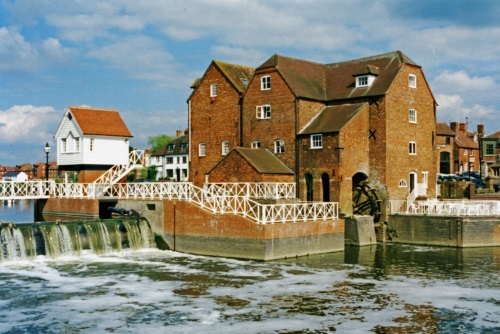
An old mill on the River Avon, near Tewkesbury
Abbey Mill
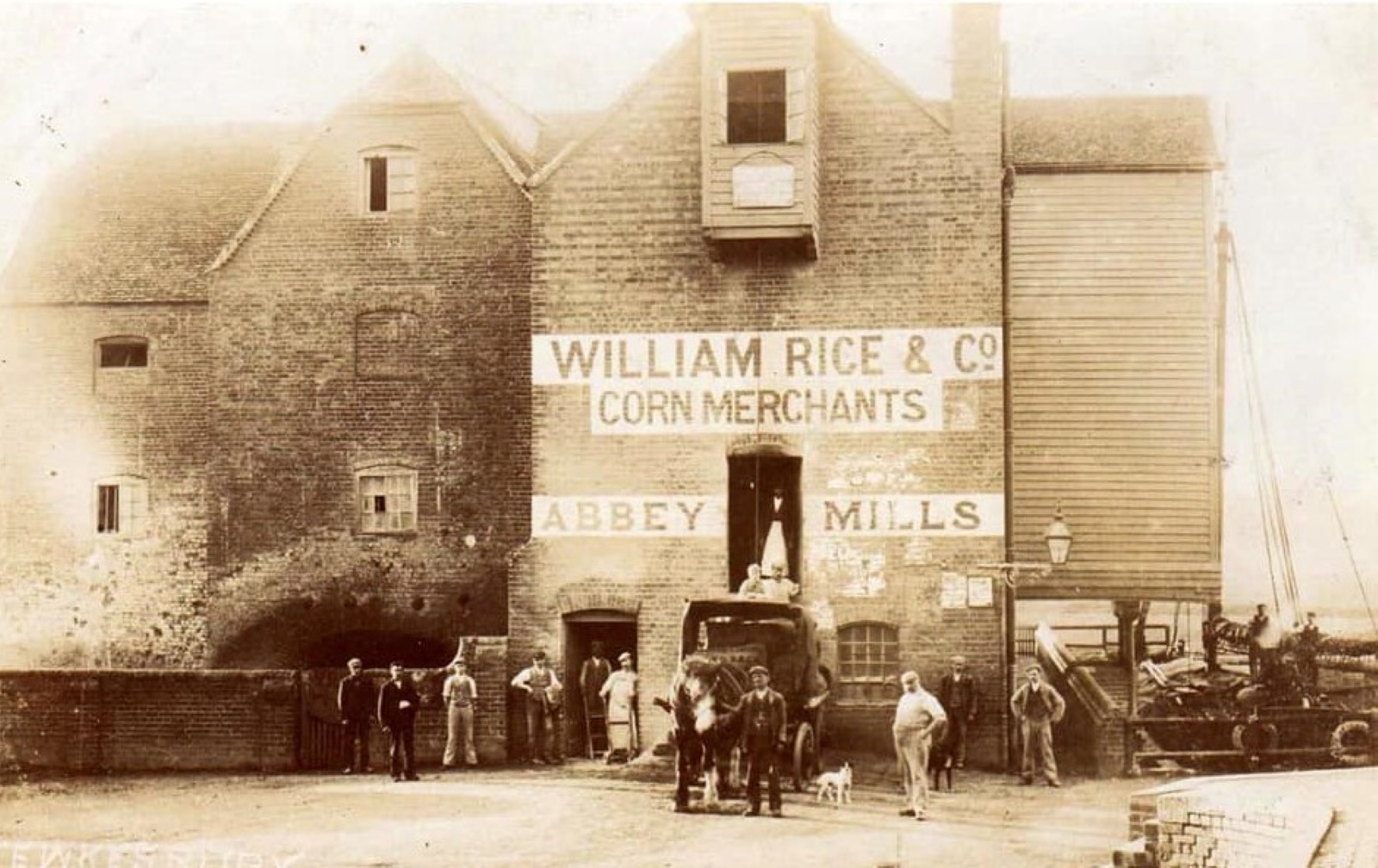
Abbey Mill is at the end of Mill Street on the banks of the Mill Avon.There has been a mill at the end of Mill Street since 1190, when the monks of nearby Tewkesbury Abbey had a channel dug from the River Avon to power a mill to grind grain. The channel is known as Mill Avon, and extends from the Avon to the Severn at the southern edge of Tewkesbury. It was known as Abbey Mill.
It was purchased by Abel Fletcher and rebuilt in 1793 with 4 wheels. Fletcher was a Quaker and was the inspiration for the miller in Dinah Craik's popular novel, 'John Halifax - Gentleman', published in 1856.
It remained in operation until 1920, but could not compete with the larger and more modern Healing's Flour Mill, further north along the channel. That mill in turn went out of business and now stands empty.
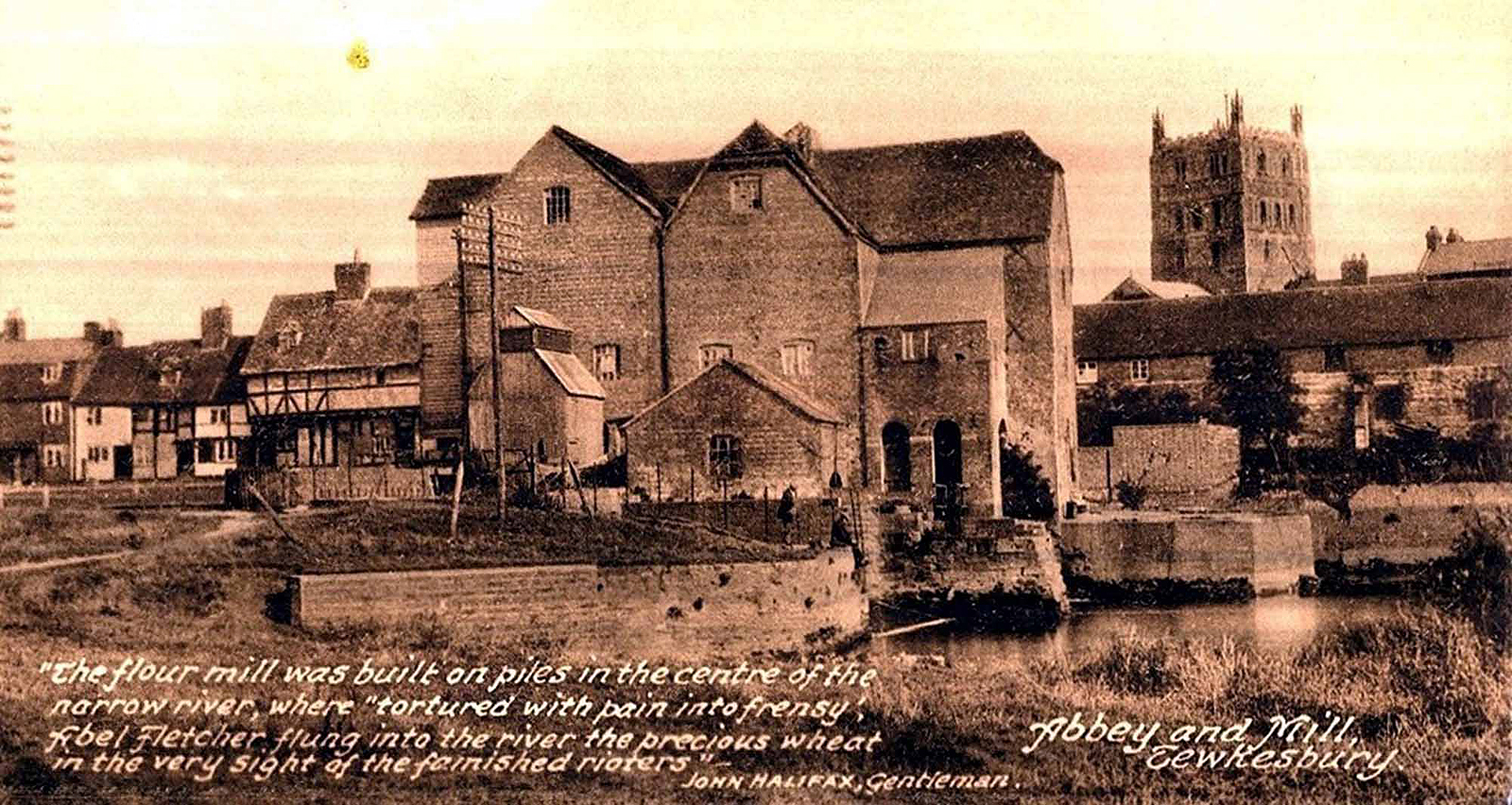
The flour mill at the end of Mill Street with the abbey in the background
Gravel Walk
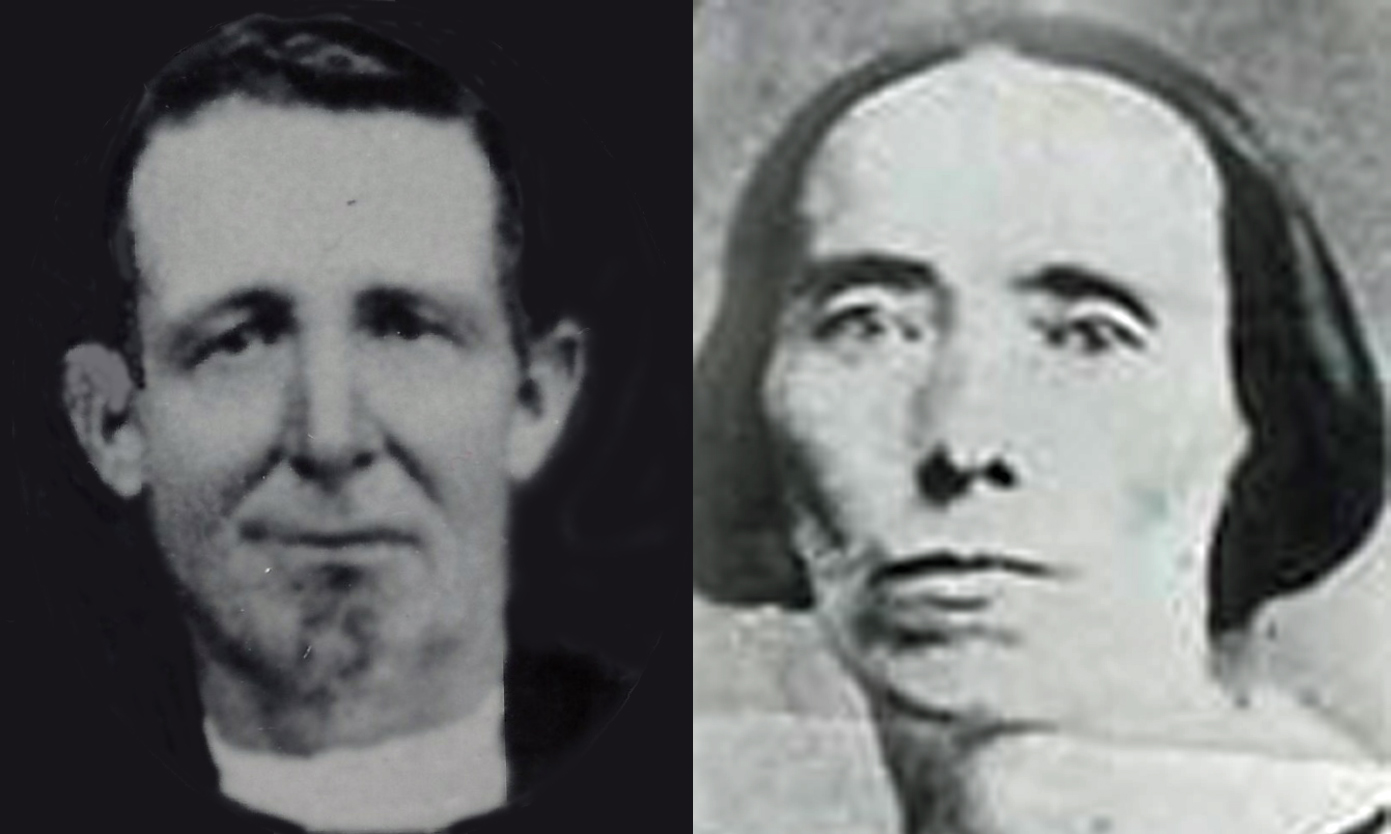
William Wilkes, second child of William Wilkes and Elizabeth Hunt married Elizabeth Haines 18 March 1846 in Tewkesbury. In the 1851 census they were living in Workhouse Alley next door to his parents. He was a stocking maker. While they were living there they had a daughter they named, Eunice who died in 1848. They also had a daughter, Sarah born in 1850.
In 1852 they were living in Gravel Walk, which was built on an area of gravel deposits. Their son John was born there 3 October 1852.
William was still working as a stocking maker. John suffered from a paralytic stroke at age seven months, which crippled his right arm and left leg.
William immigrated to the United States in April 1855 on the William Stetson. Elizabeth, Sarah and John immigrated to the United States on the Caravan in February 1856.
Tolsey Lane
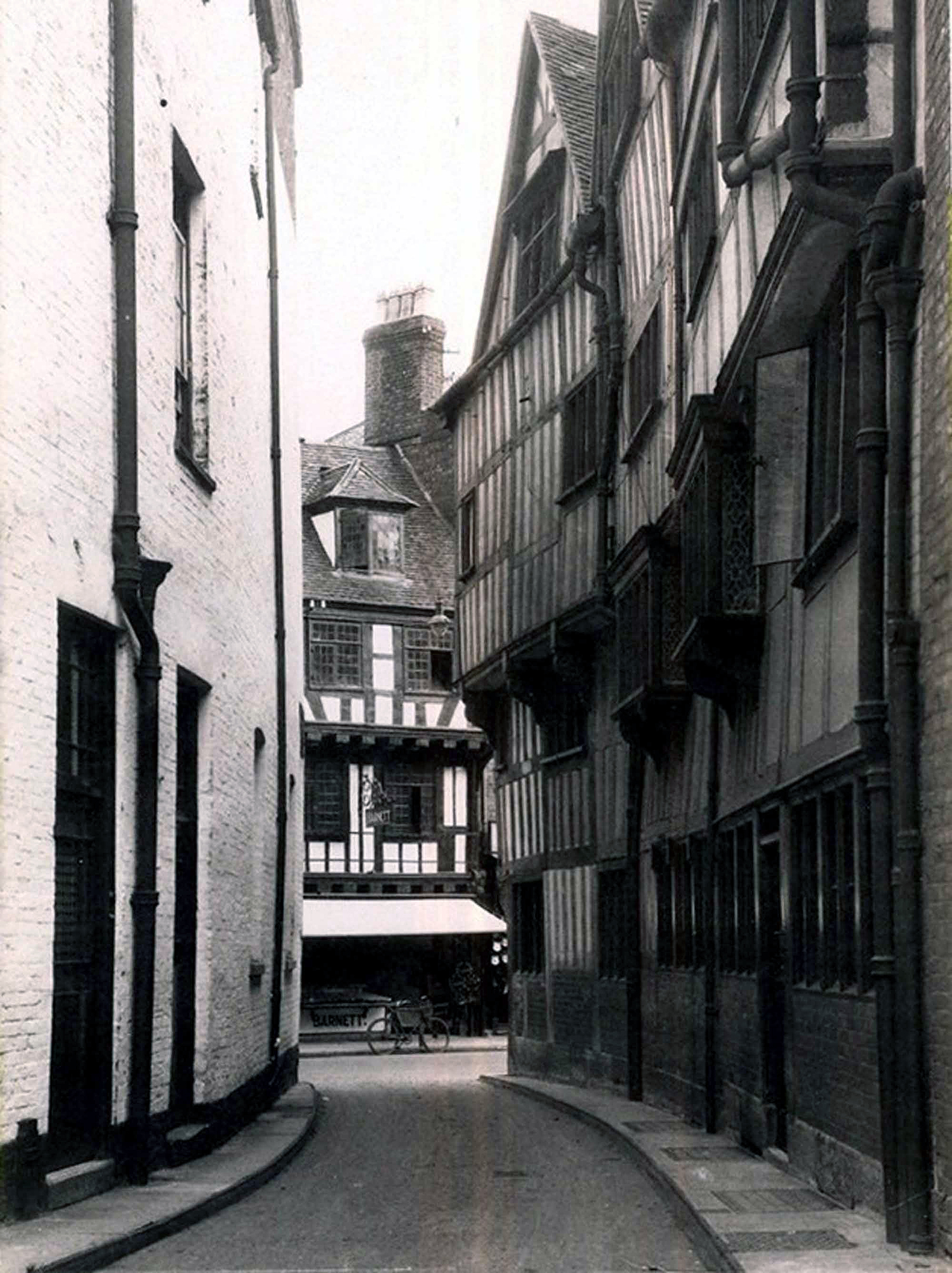
Tolsey Lane in 1930, taken by Loyn Blacker
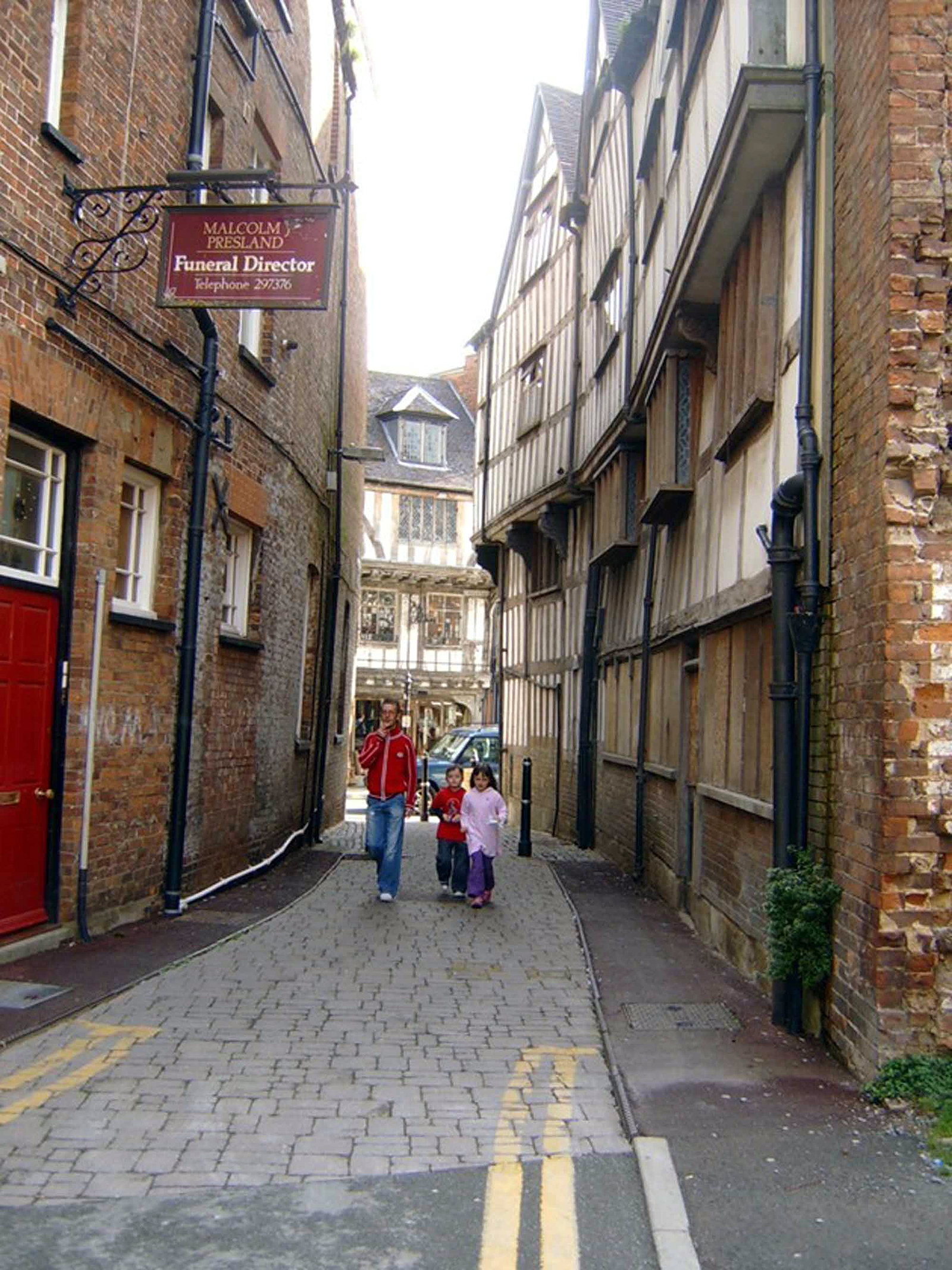
Tolsey in 2004, taken by Laron Waite
Workhouse Alley
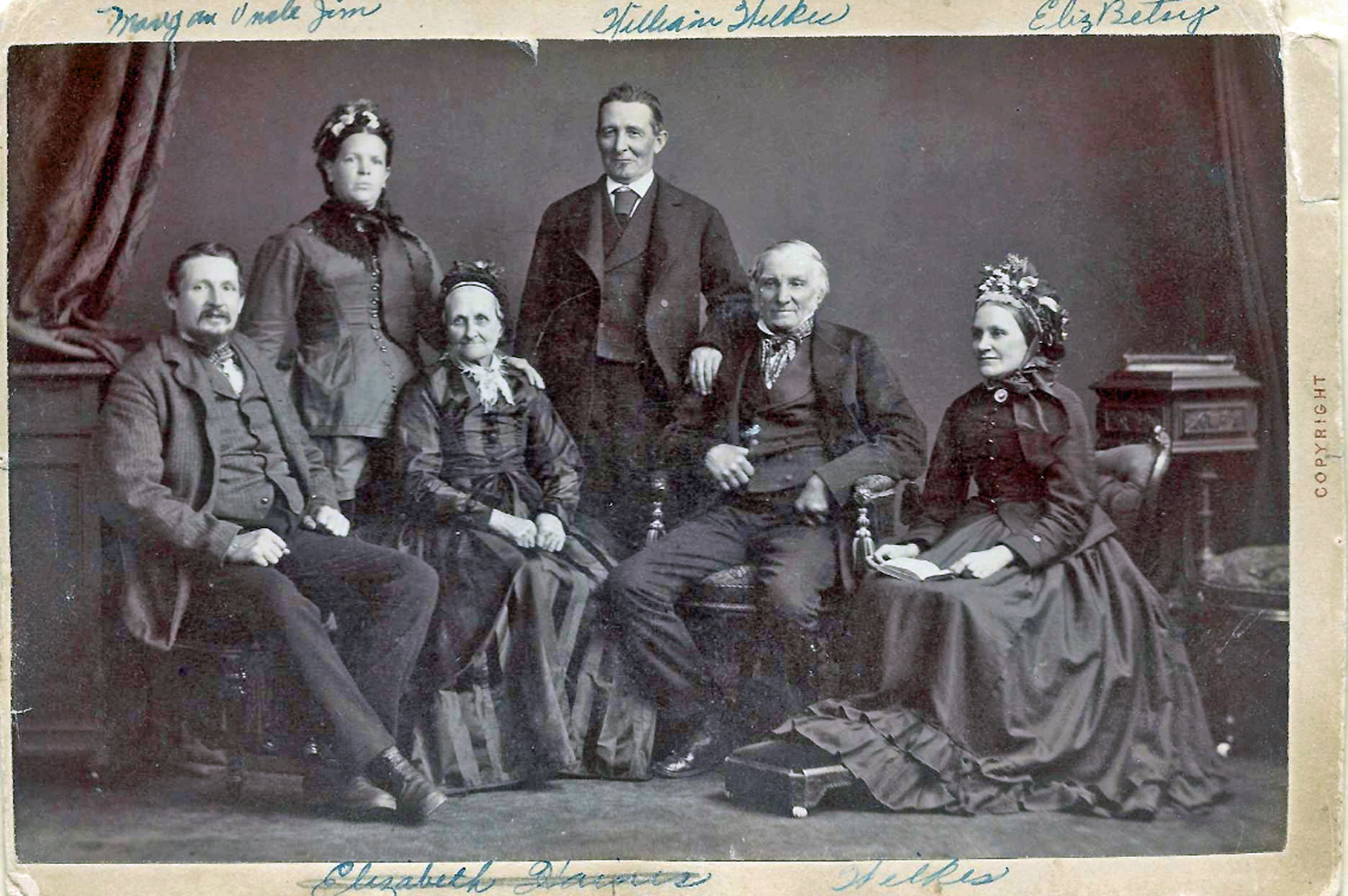
William Wilkes lived as a child with his parents in Workhouse Alley.
Front from left to right: James Wilkes, Elizabeth Hunt Wilkes, William Wilkes Sr. and Elizabeth Wilkes Cleal. Back from left to right: Mary Ann Wilkes and William Wilkes Jr. William Jr. immigrated to the United States in 1855, then went back to England as a missionary in May of 1879 and returned on the ship Wyoming. This picture was probably taken while he was on his mission.
William Wilkes and Elizabeth Hunt were living in Workhouse Alley when the 1841, 1851 and 1861 censuses were taken. During that time the following children died; Henry age 2, 1835; Samuel age one month, 1844; Helen age 7, 1845; Sarah Ann age 11, 1846; Harriett age 3 ,1849; Thomas age 1, 1849 and married daughter Hannah Fincher age 28, 1853.
The alley is not there any more, but was where #69 & #70 Barton Street are today.
Just east of the alley is a place called Peachey's Alley or Court. It was named after a Mr. Peachey who was a carpenter and lived there as early as 1840. It was accessed directly off of #71-72 Barton Street, and was demolished in 1969.
In the 1871 census there were seven families comprising thirty-six people living in Peachey's Court. William and Elziabeth Wilkes lived there with their daughter Mary Ann, Eliza Cleal age 11, a granddaugher, and Clara King age 4 a lodger.
The 1881 census lists four families living in Peachey's Court. William and Elizabeth Wilkes are still there. Living with them are their daughter Mary Ann, Clara King age 14, the lodger they had in 1871, and a nephew, Ernest Davis age 4.
Fincher's Lane
Fincher's Alley, named after John Fincher who had a bakery in the alley in 1840. It is not used any more but was where #57-58 Barton Street are today.
The Bell Hotel
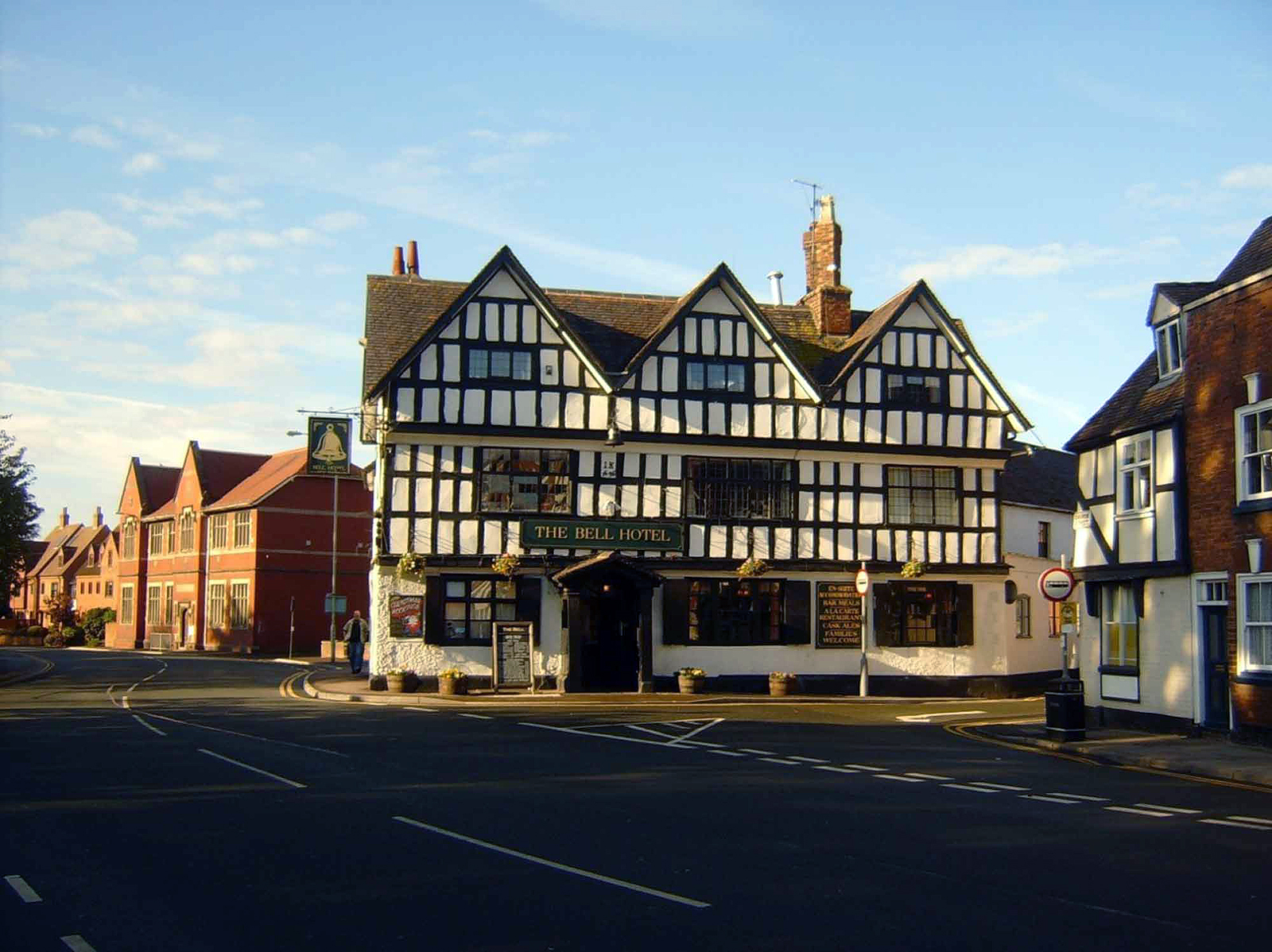
The Bell Hotel at the south end of Church Street
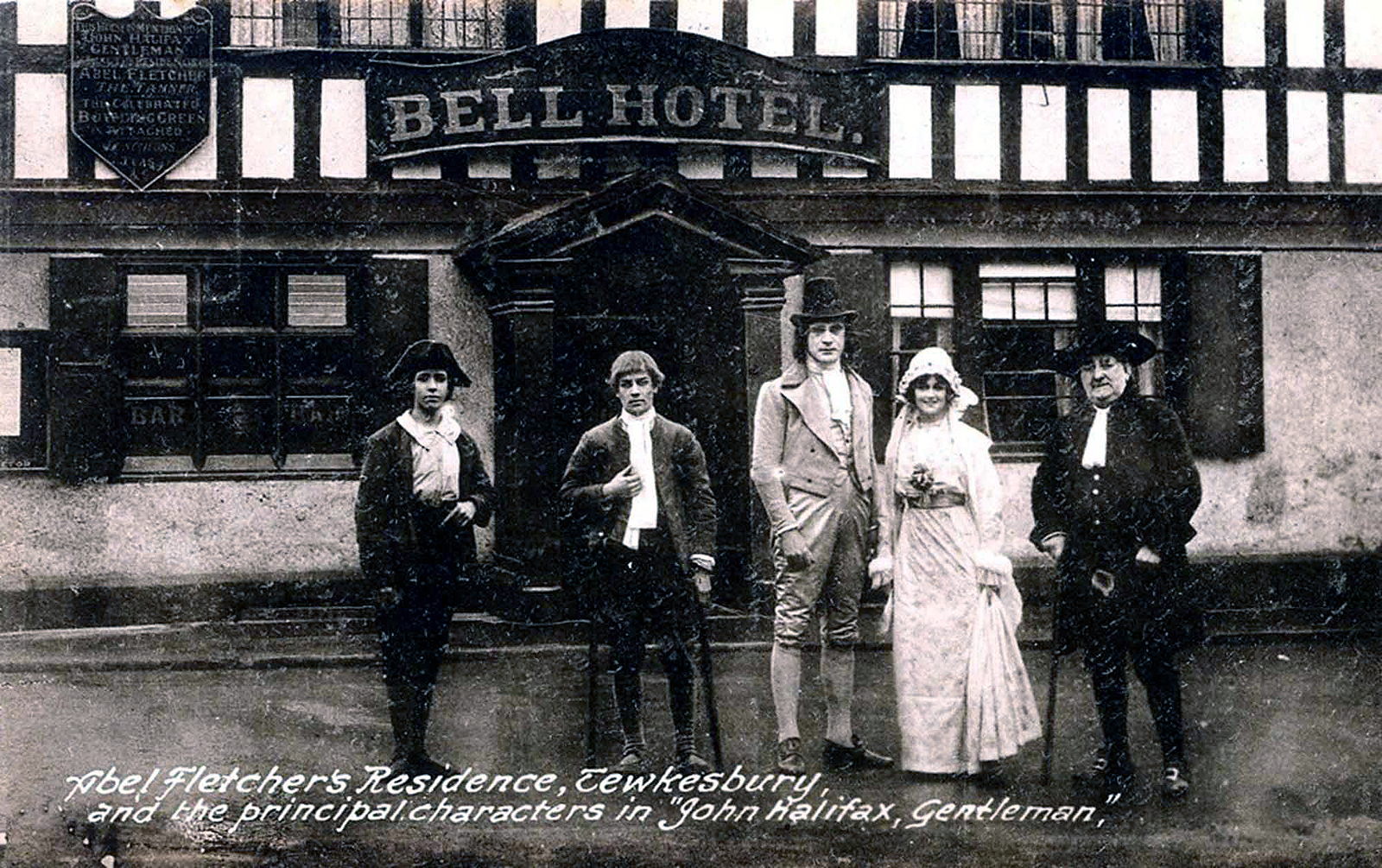
Actors in the play "John Halifax Gentleman" that was presented in the Bell Hotel
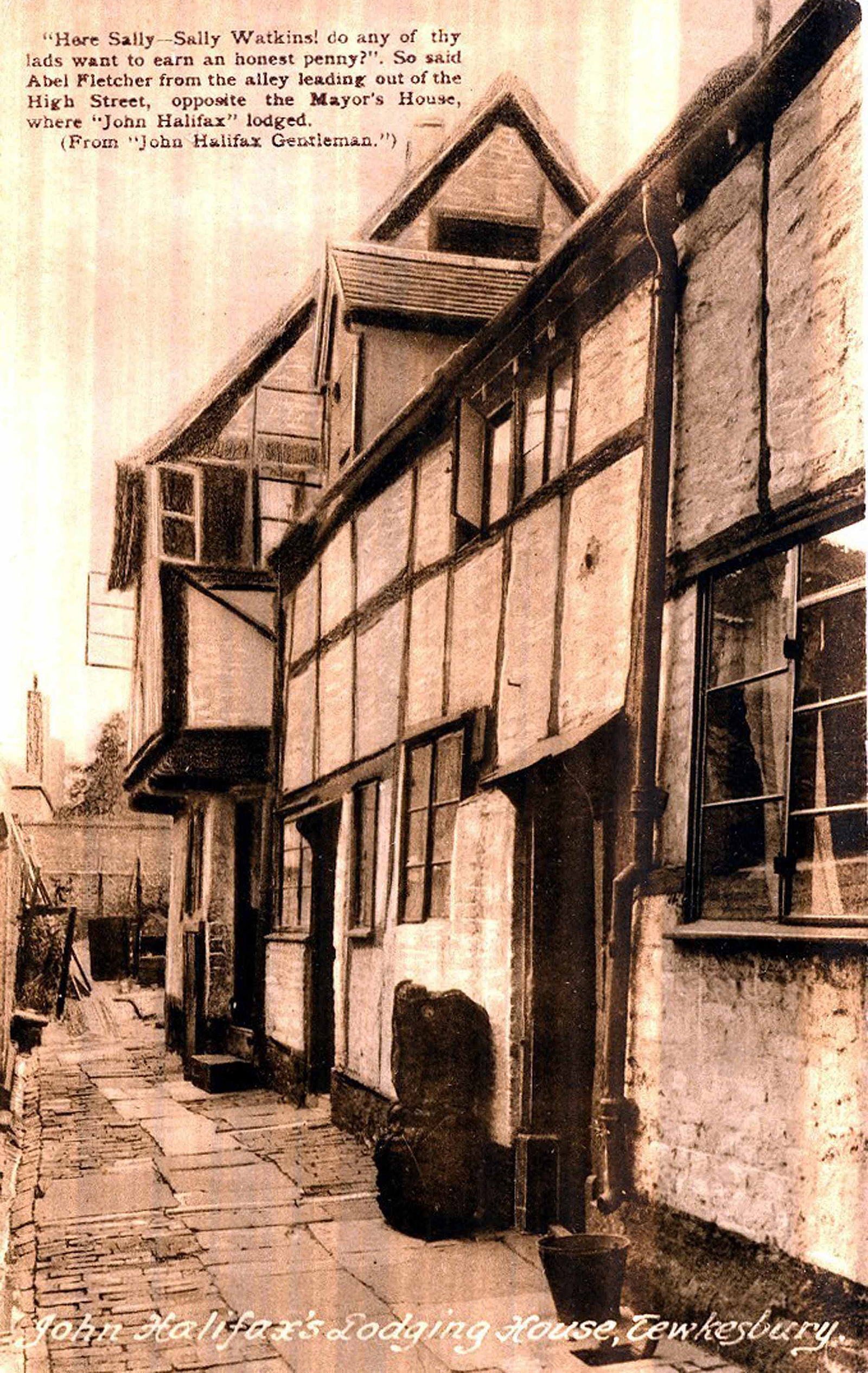
<
Albel Fletcher's residence where John Halifax lodged
Tewkesbury Abbey

Tewkesbury Abbey is in the background of this photo taken in 1930 by Loyn Blacker
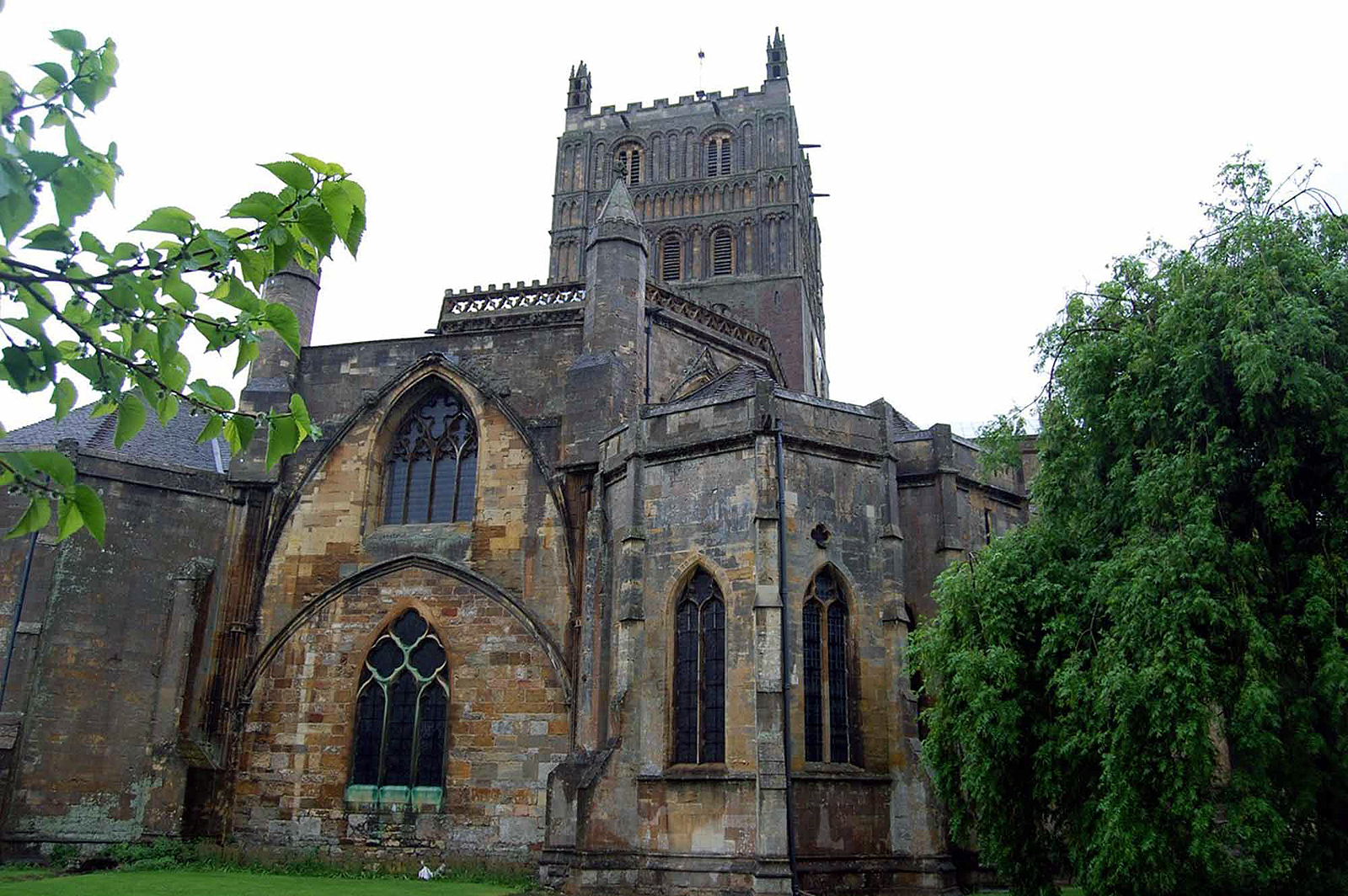
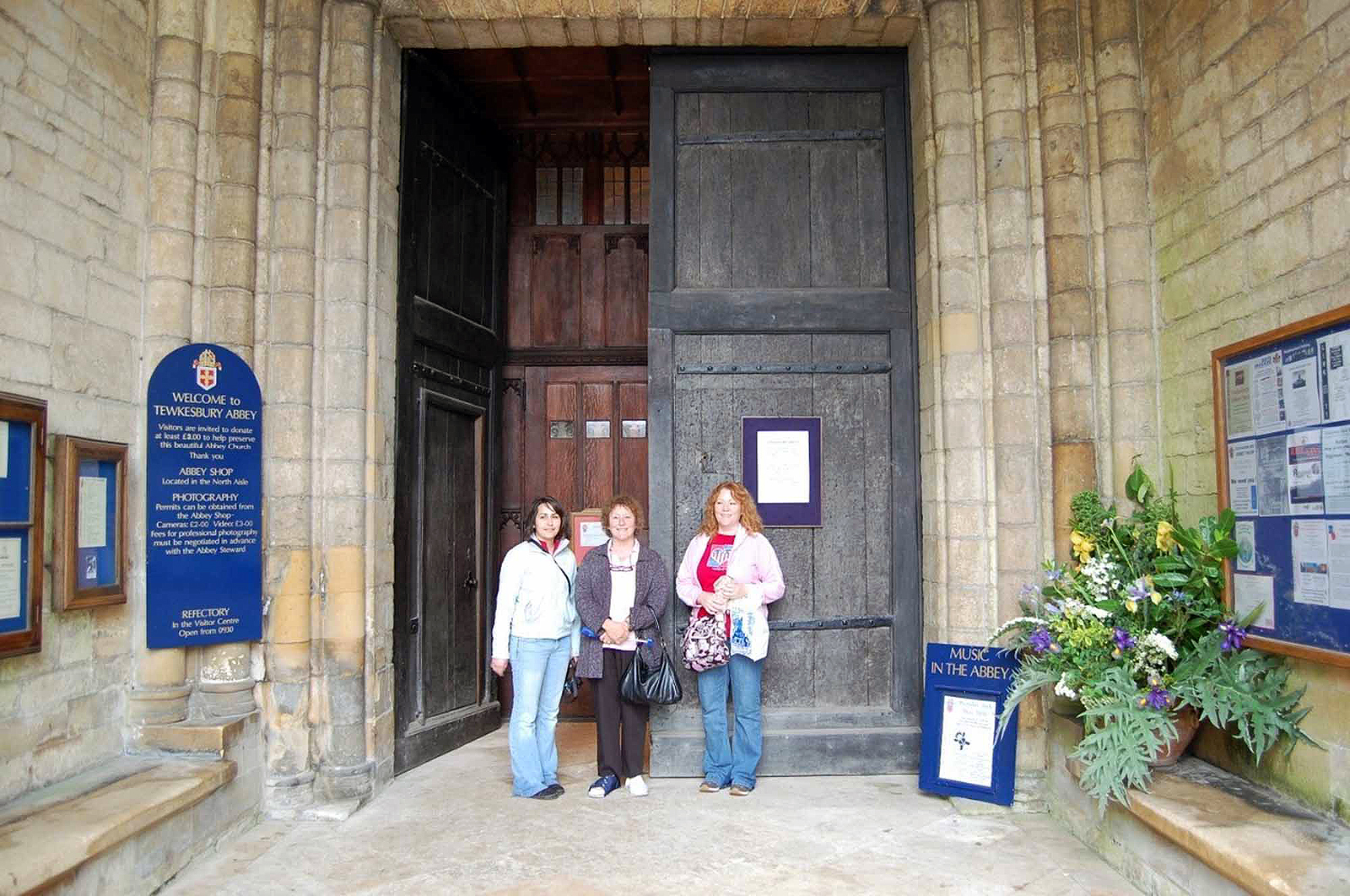

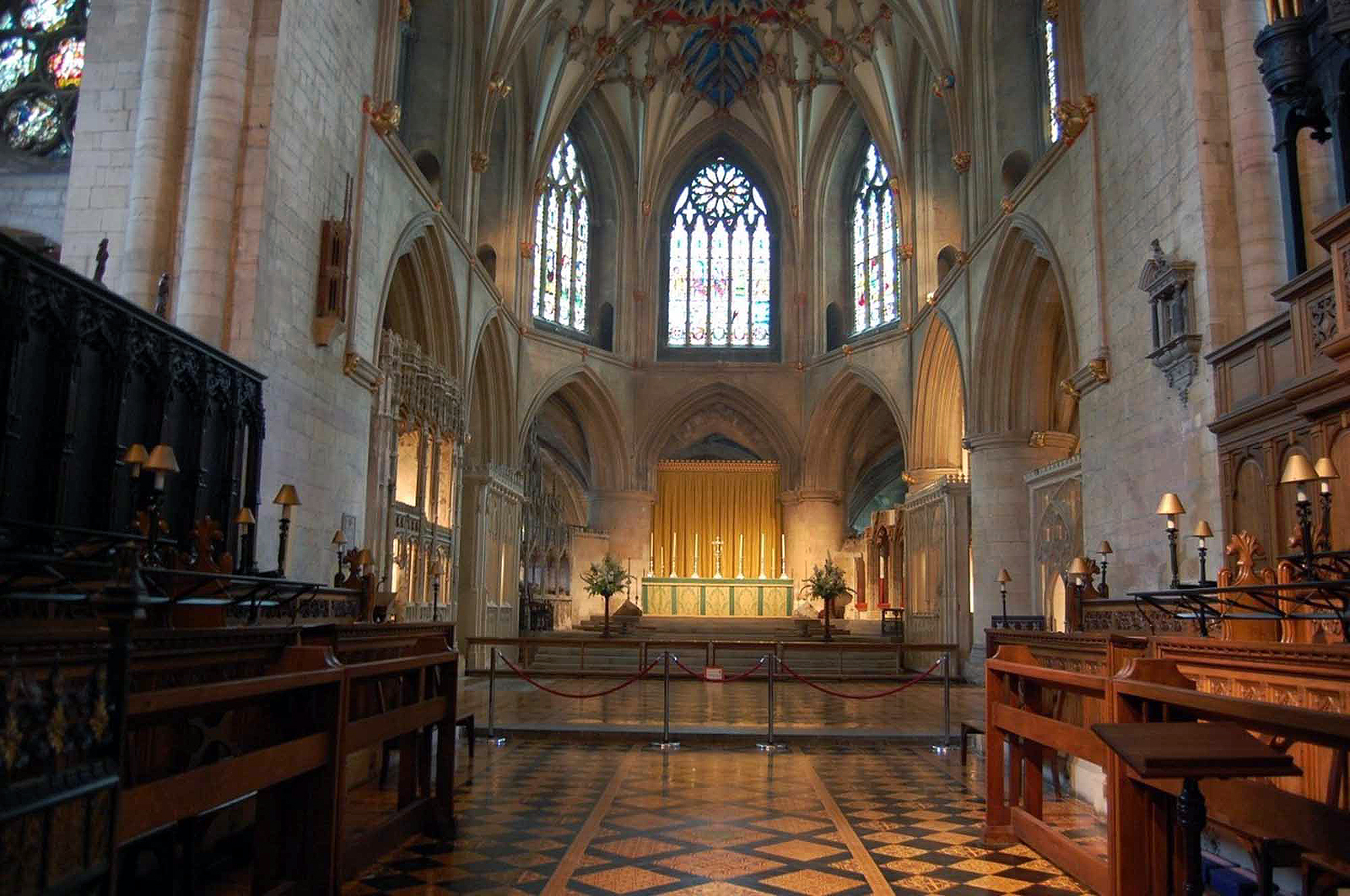
Taken in 2008 by Laron Waite
'
Bloody Field
During the Battle of Tewkesbury in May of 1471 many Lancastrian soldiers sought sanctuary in Tewkesbury Abby. Two days after the battle the Yorkist king Edward IV had them taken from the abbey and into the area just east of the abbey, where they were all executed.
Union Workhouse
At various times, laws were created in Britain to care for the poor. The Poor Law passed in 1834 mandated workhouses also called Houses of Industry, be set up throughout the British Isles. These would contain a kitchen, dining halls, dormitories for sleeping, a bakery, laundry, sewing spinning and weaving areas, school rooms to teach children to read and a nursery for babies. Inmates were given specific jobs to make the workhouse self sustaining. Men, women and children wore uniforms and were kept separated.
The Union Workhouse in Tewkesbury was built in 1792. The building was made of brick, consisted of three stories and was located on Gloucester Road.
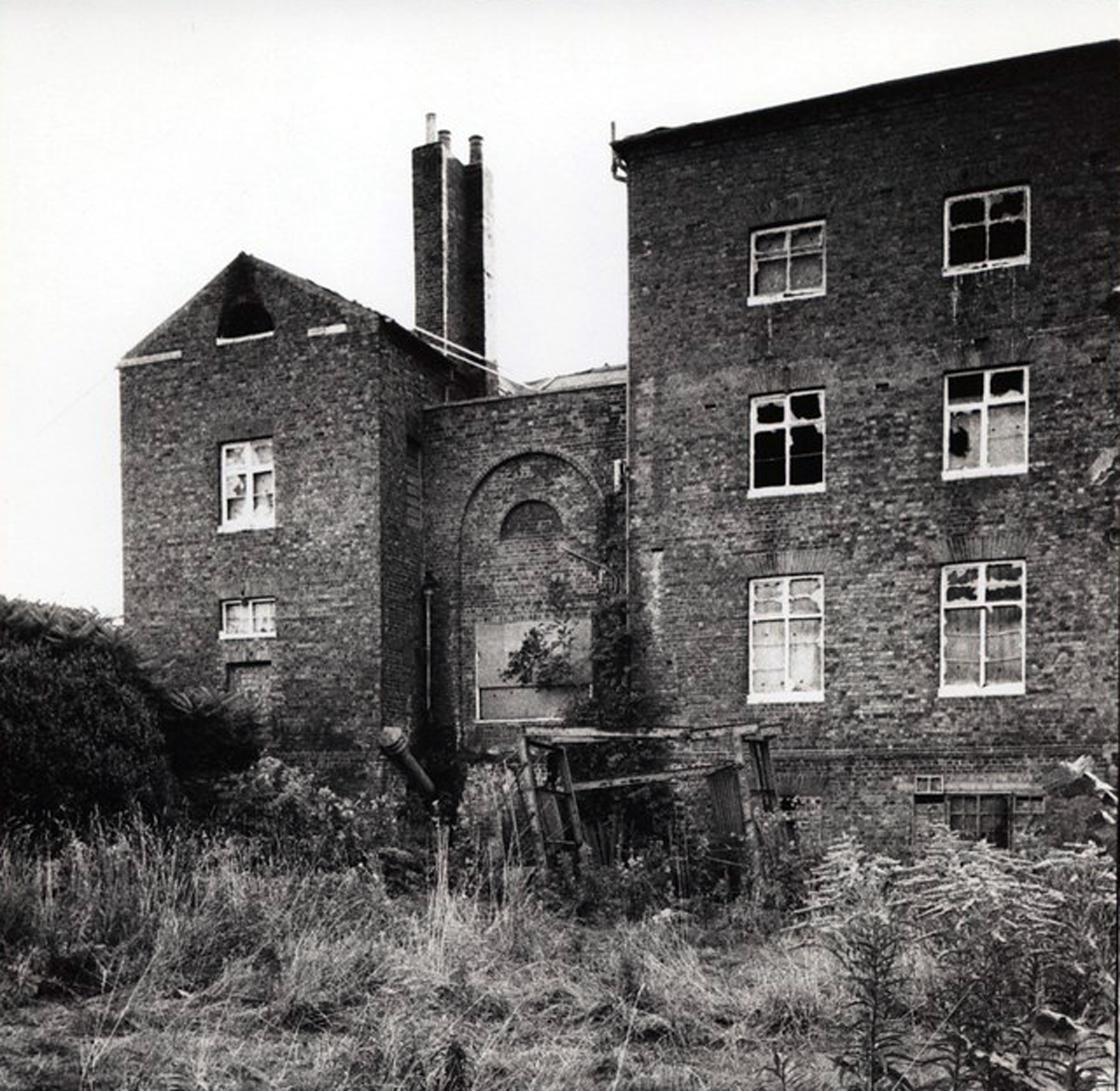
The Union Workhouse after it was abandoned in 1881

Front steps
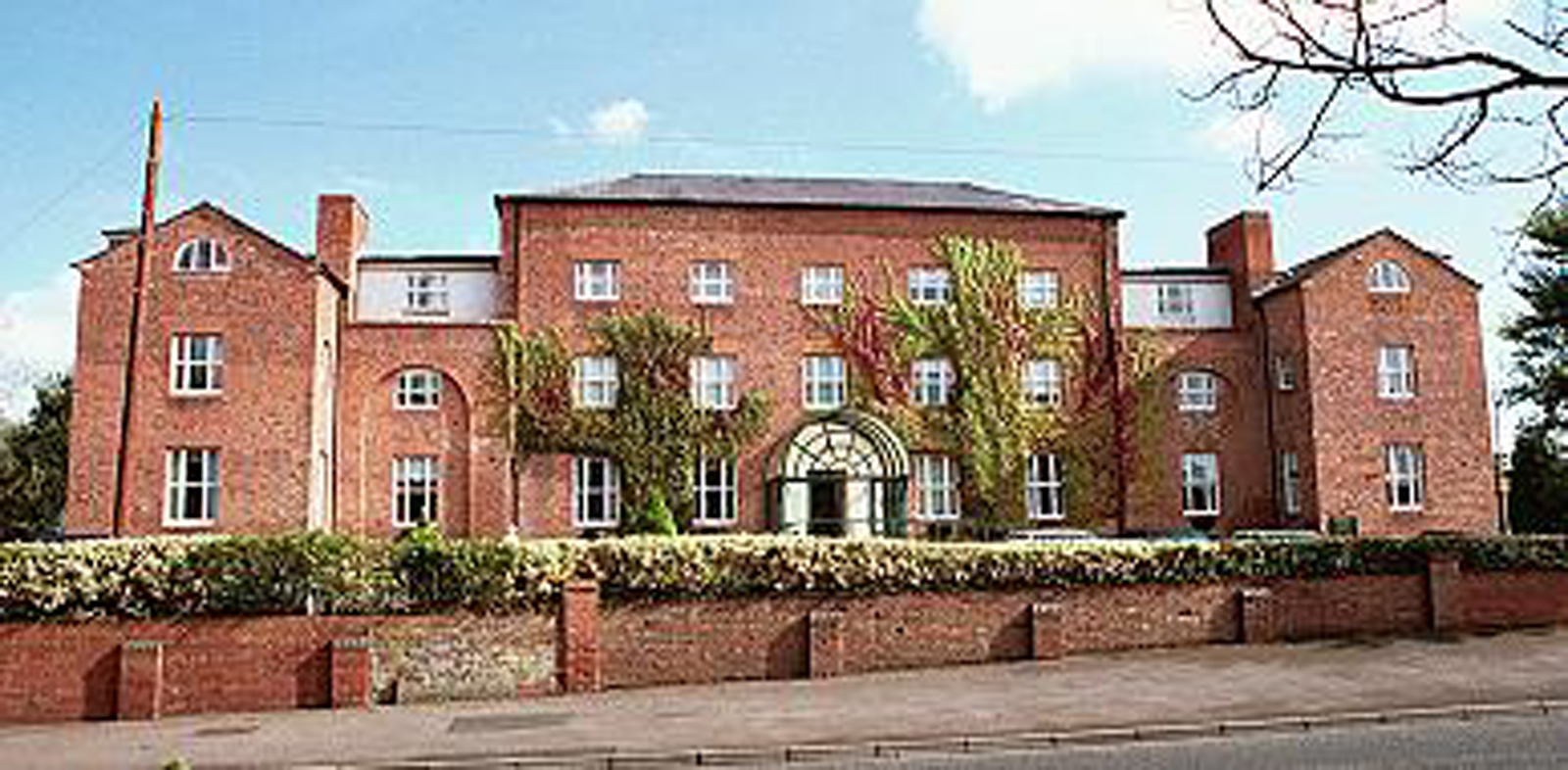
In the early 1990s the building was renovated to become the Shepherd Mead retirement homes
 An old mill on the River Avon, near Tewkesbury
An old mill on the River Avon, near Tewkesbury








 <
<




 The Union Workhouse after it was abandoned in 1881
The Union Workhouse after it was abandoned in 1881
 Front steps
Front steps
 In the early 1990s the building was renovated to become the Shepherd Mead retirement homes
In the early 1990s the building was renovated to become the Shepherd Mead retirement homes